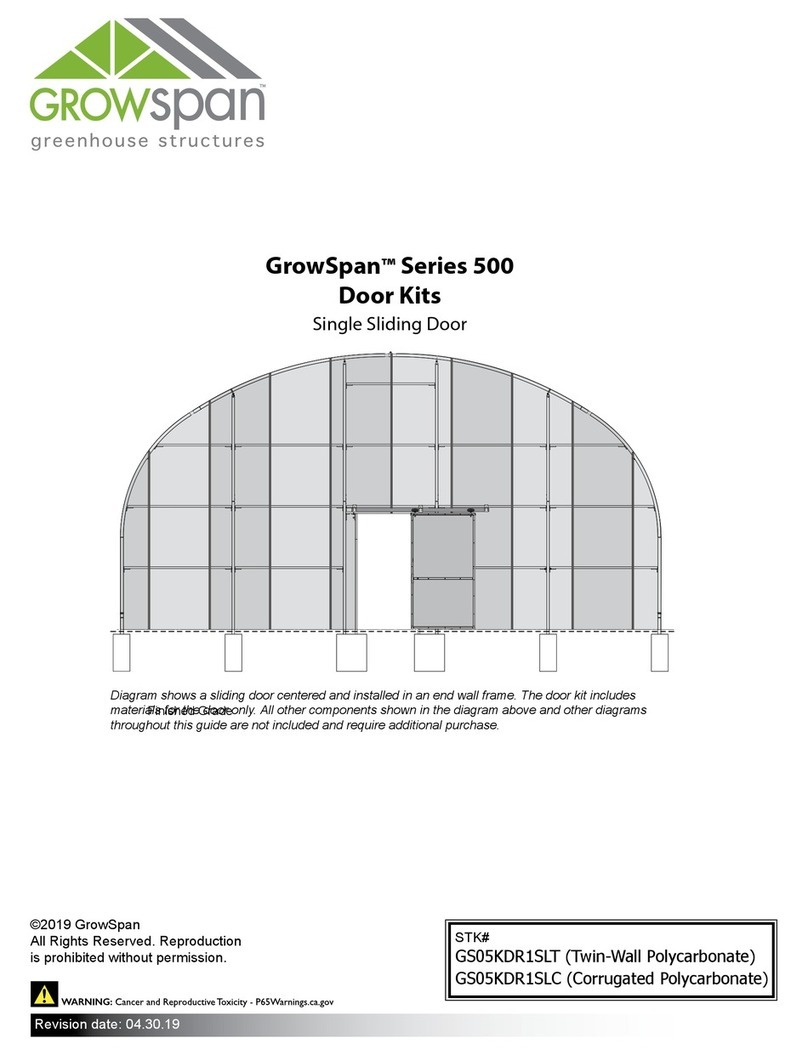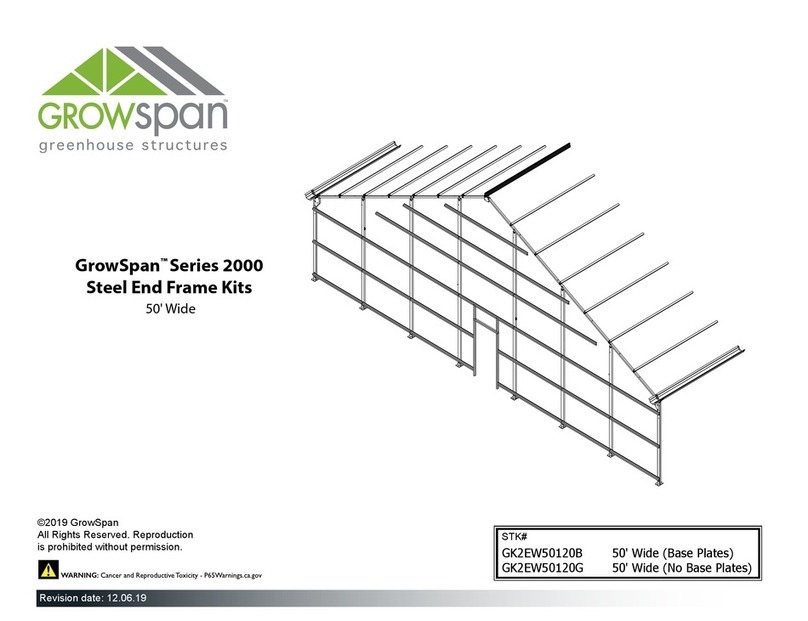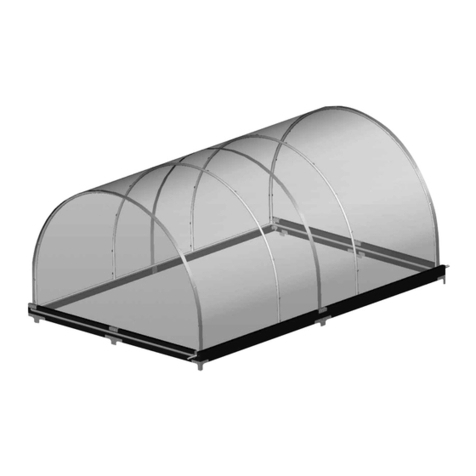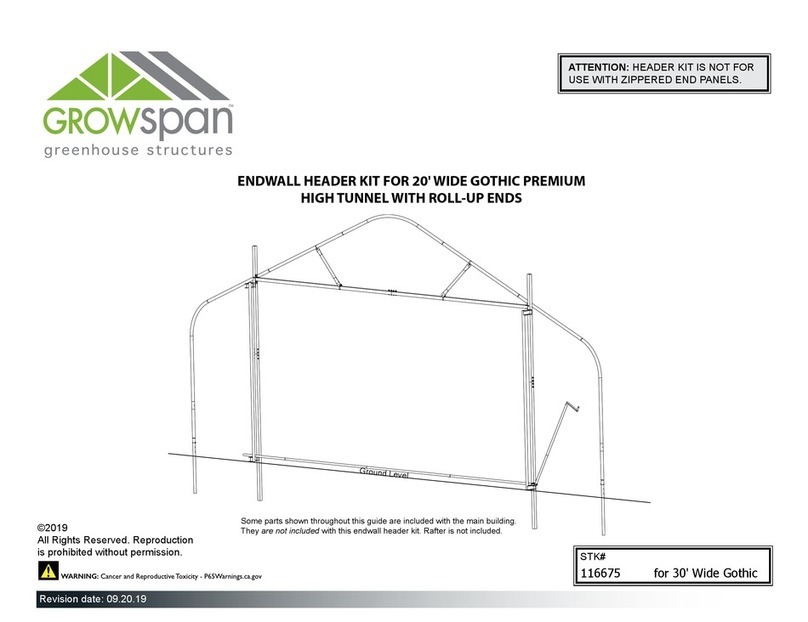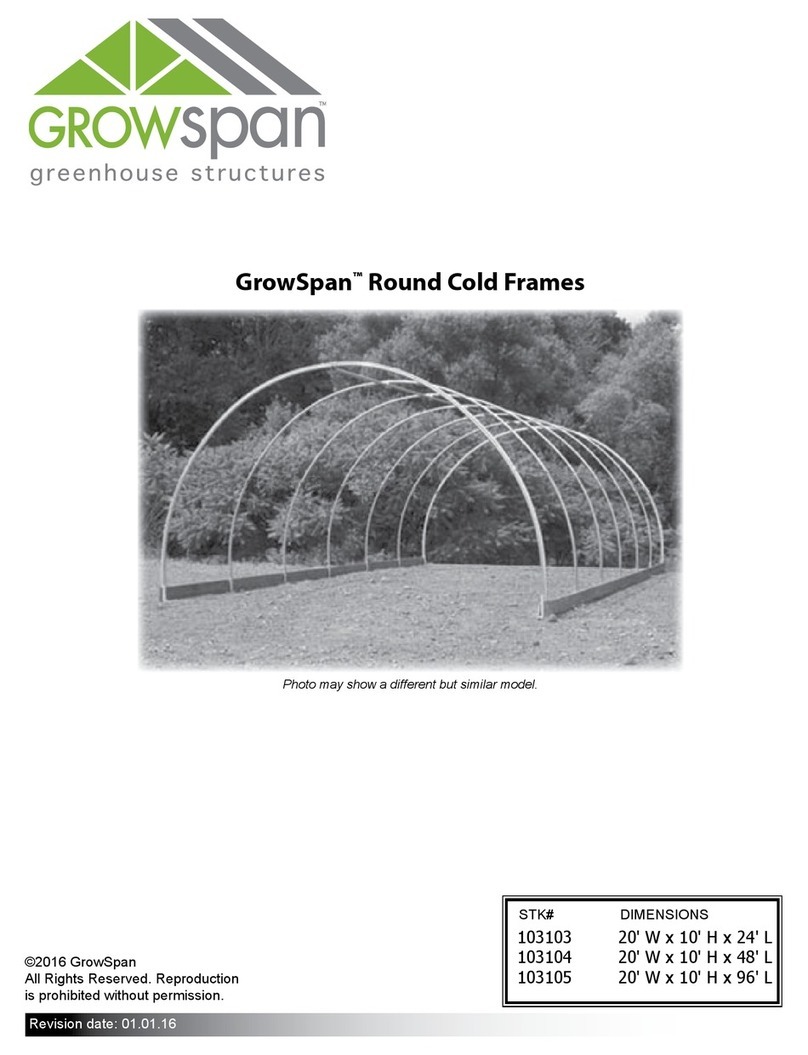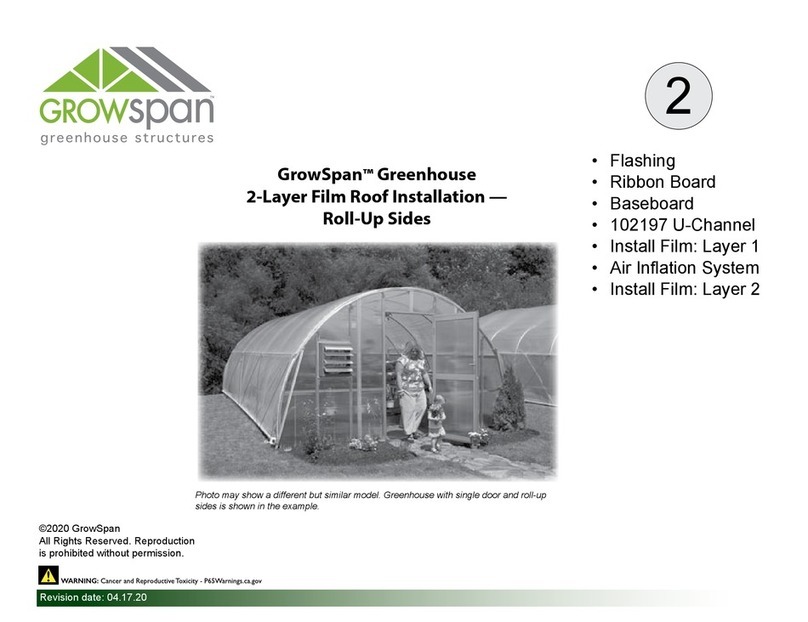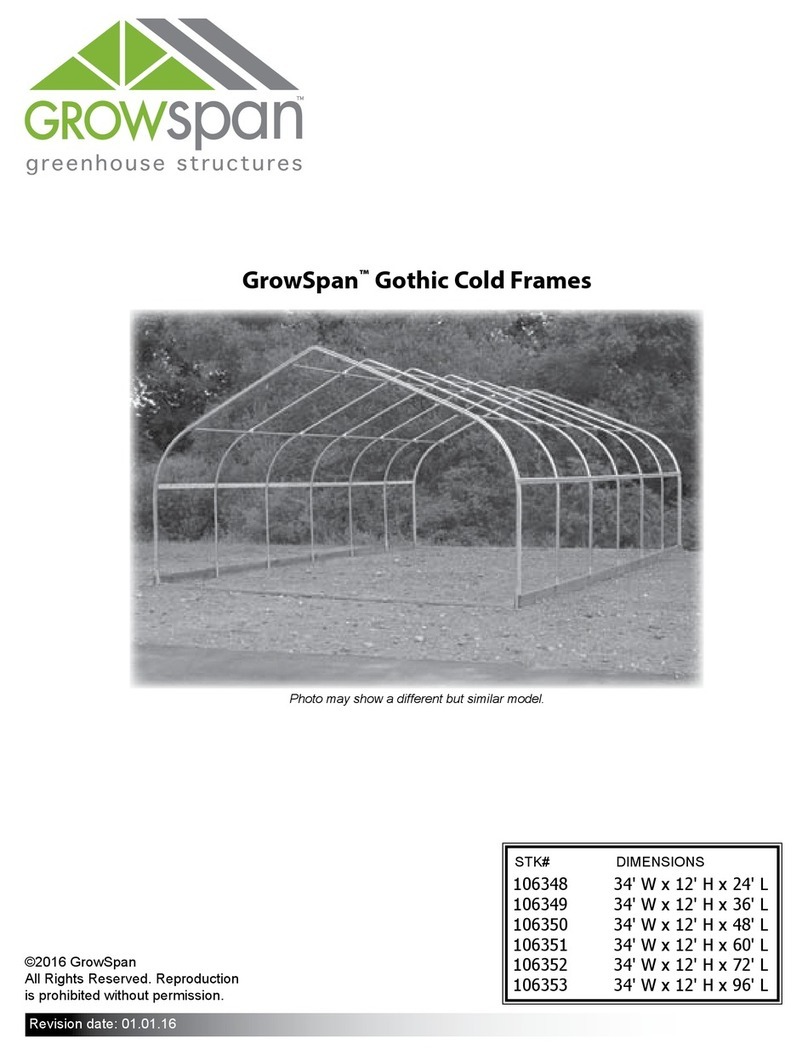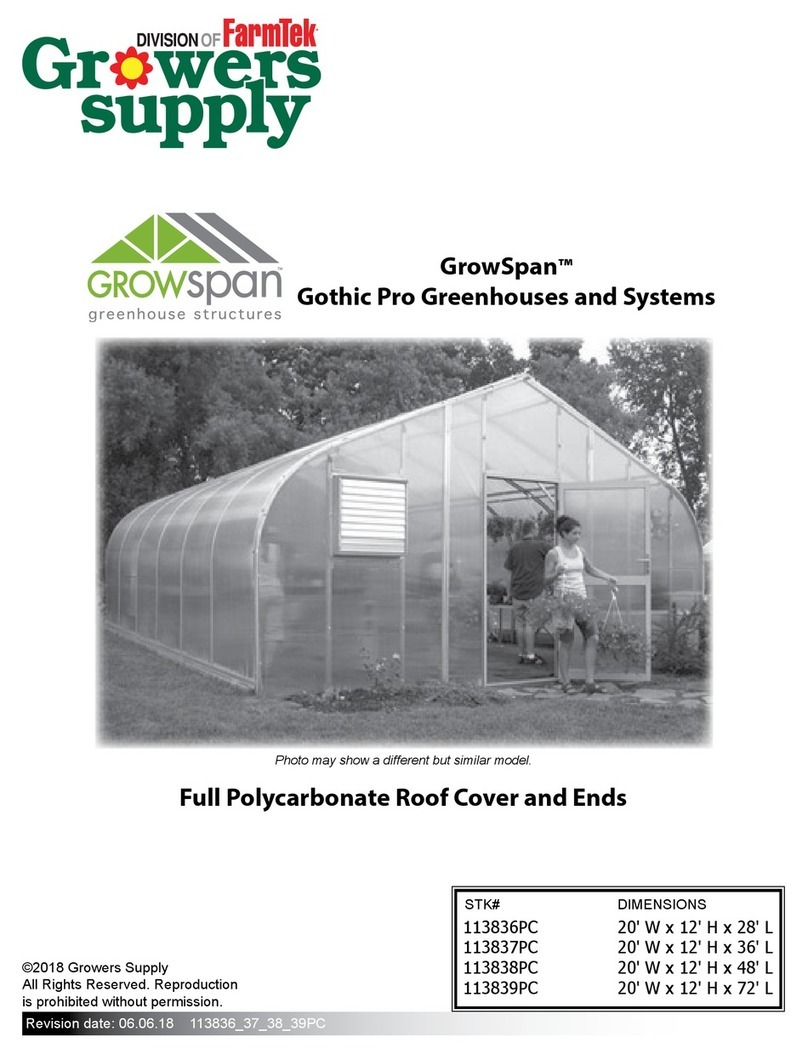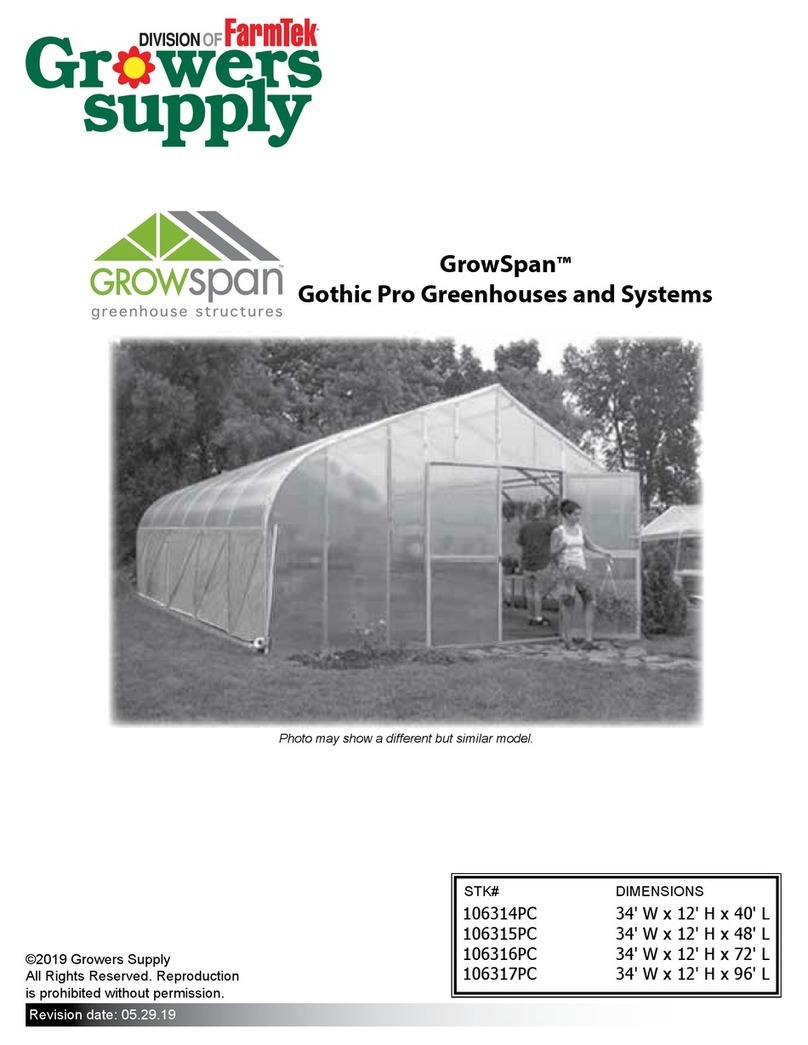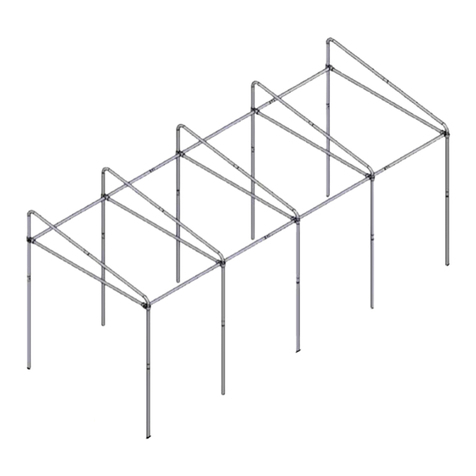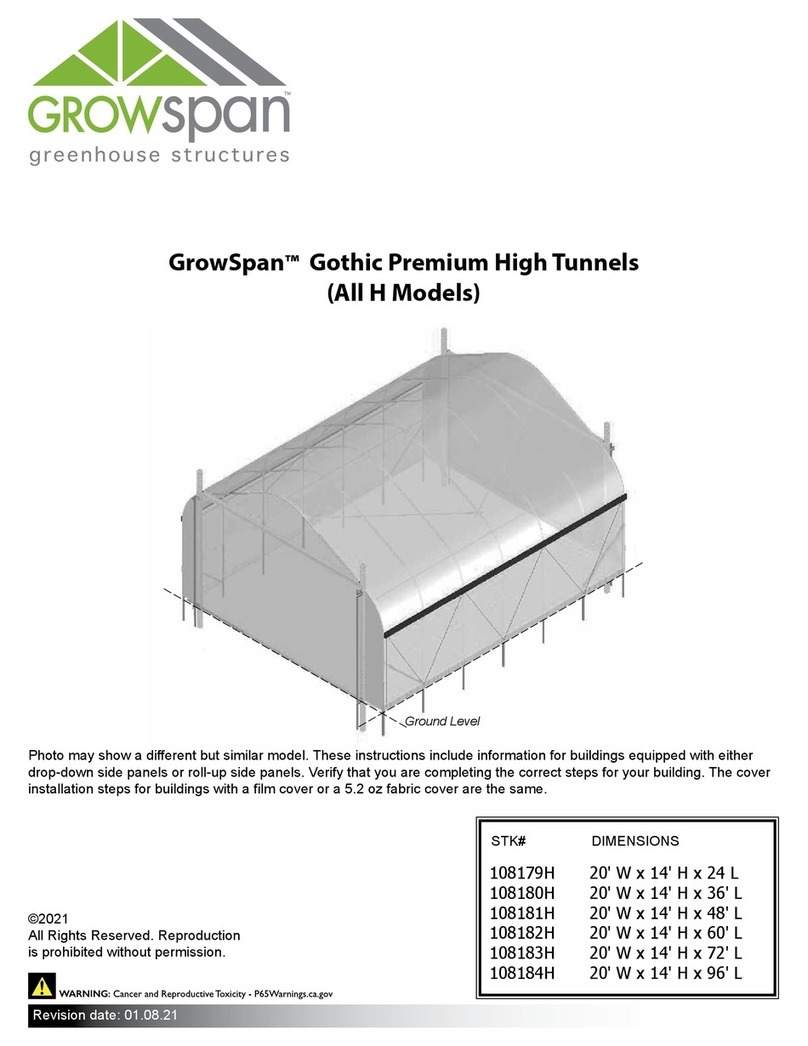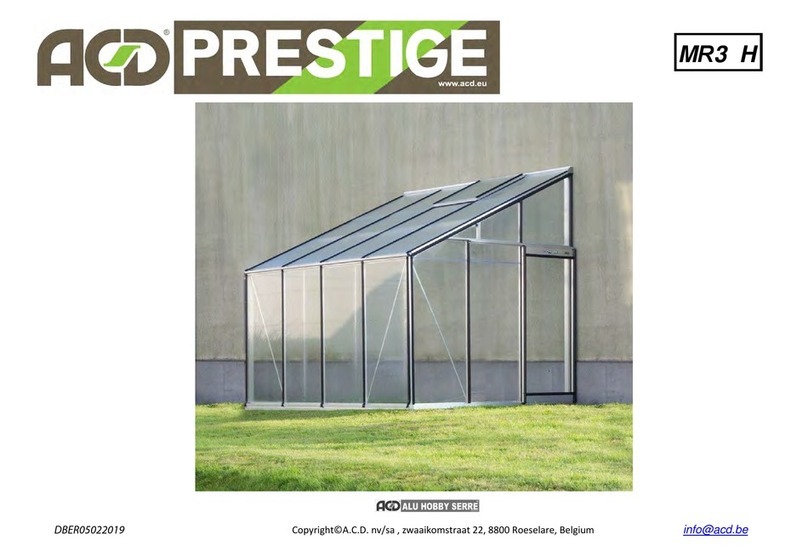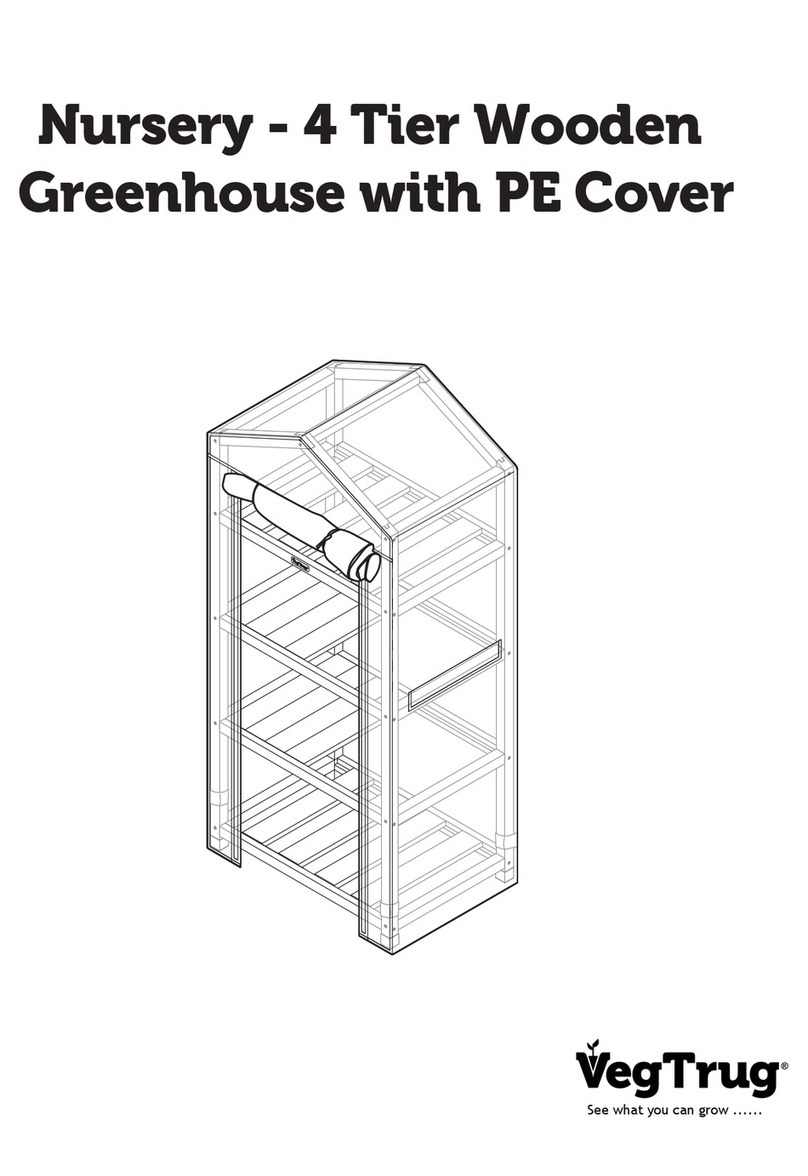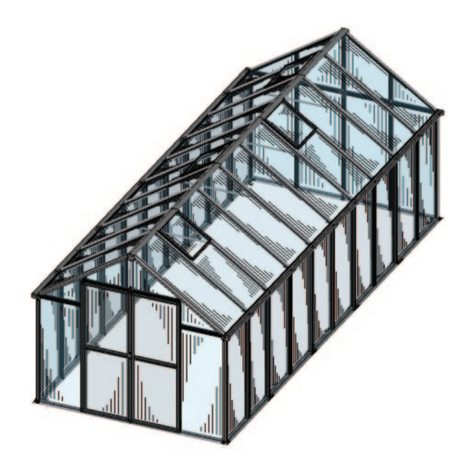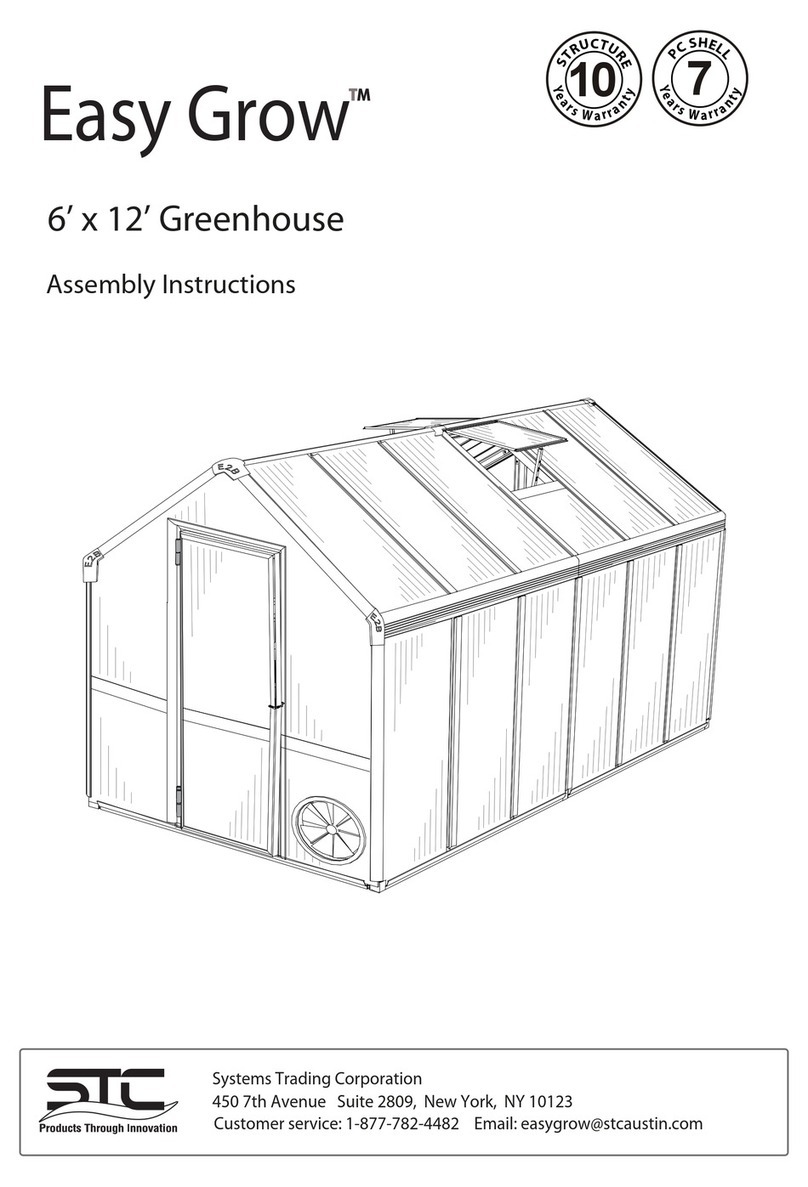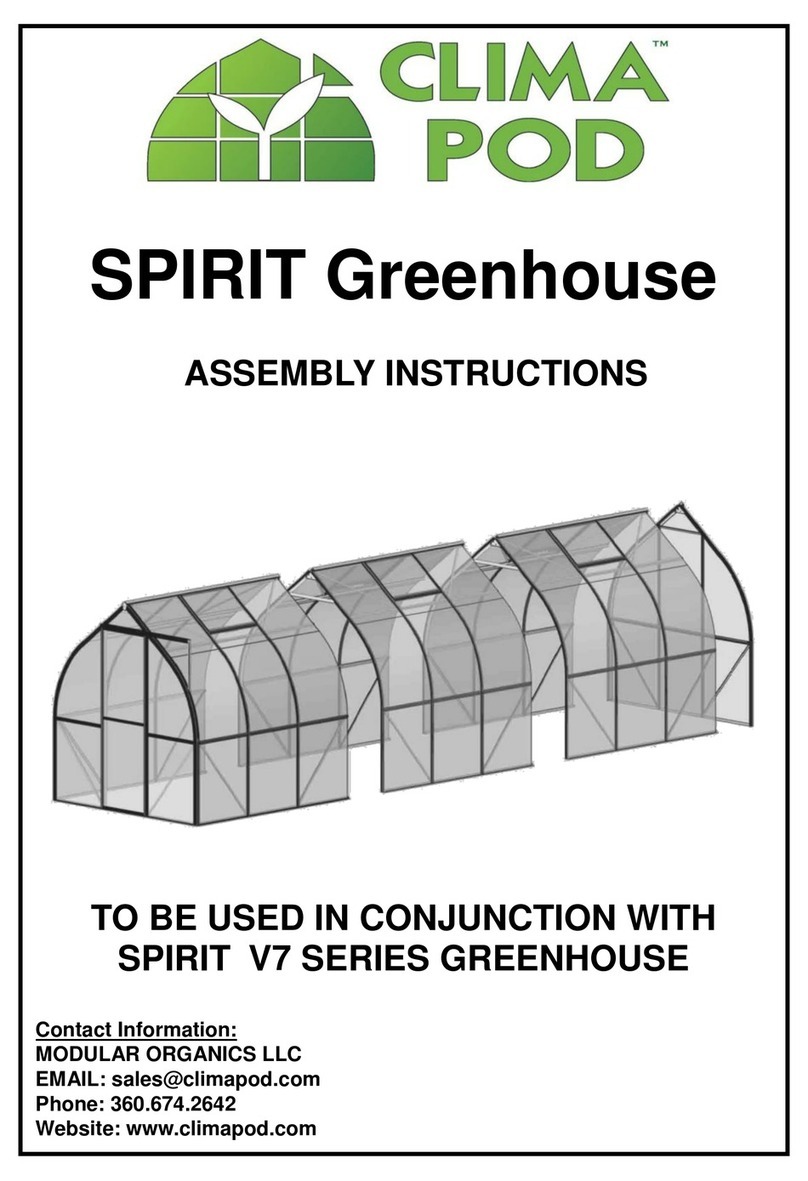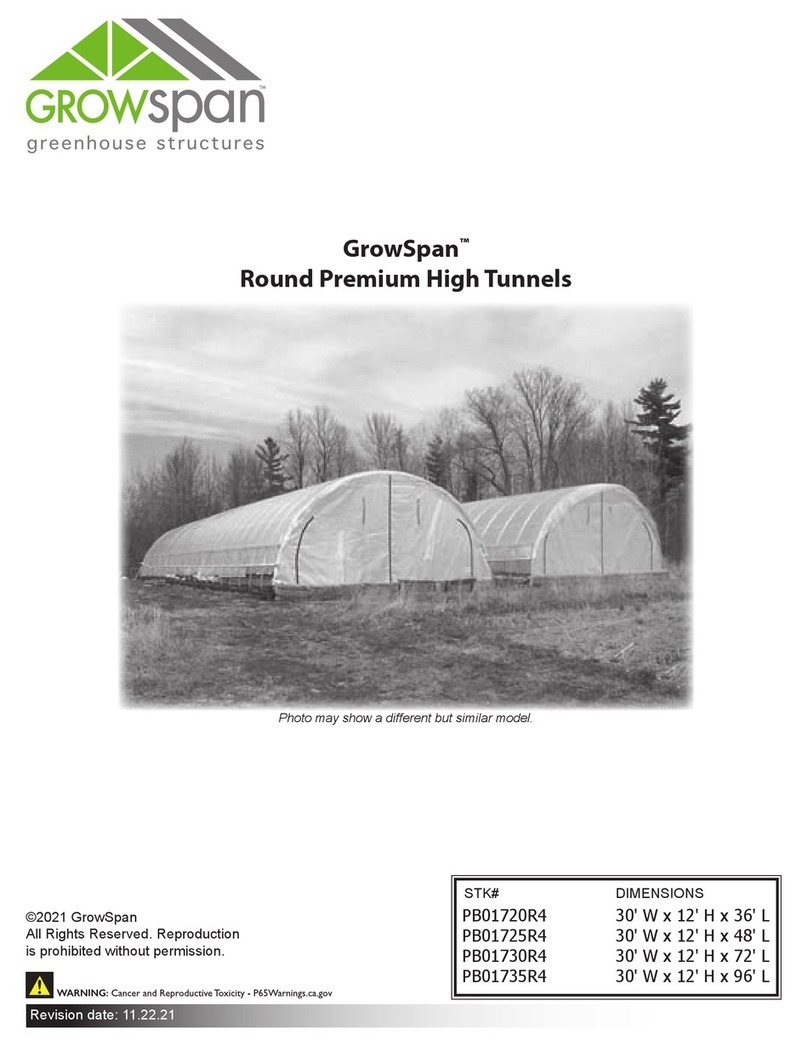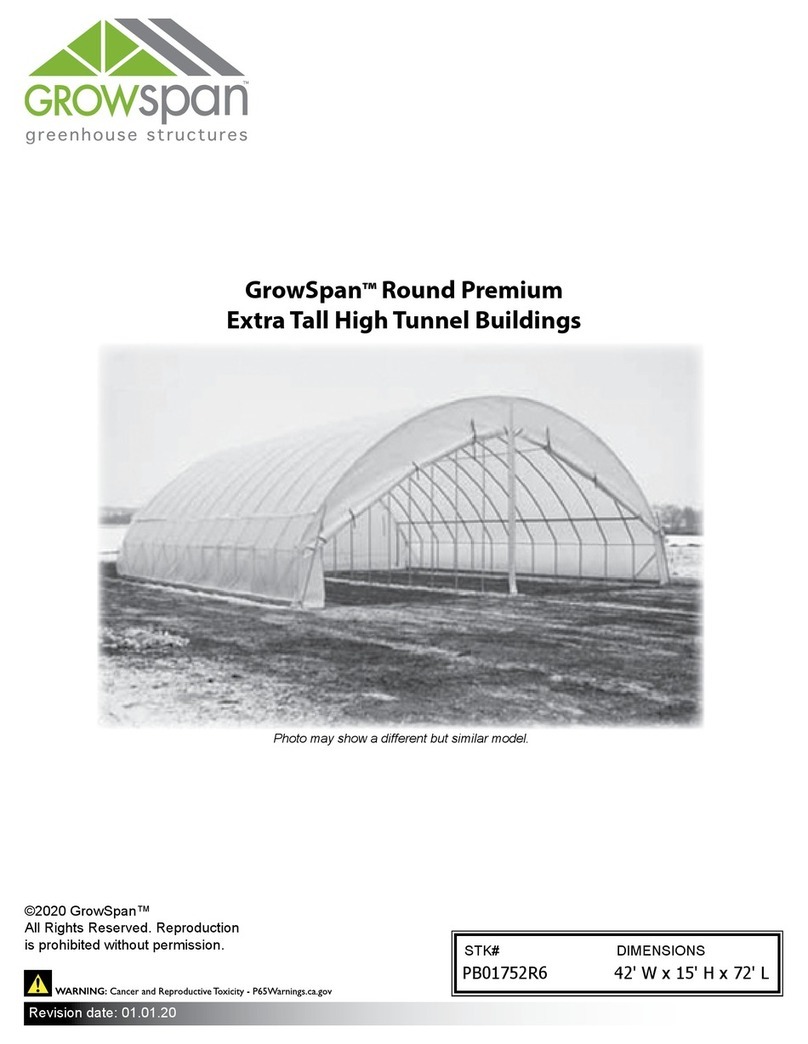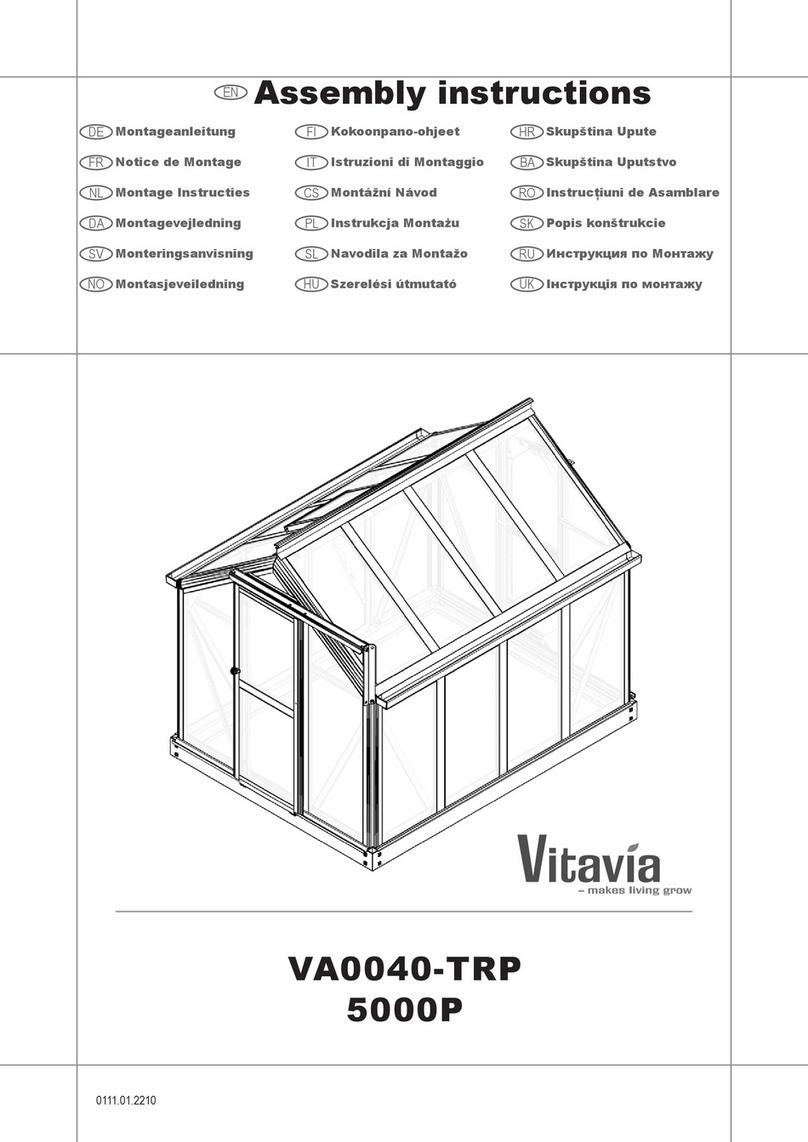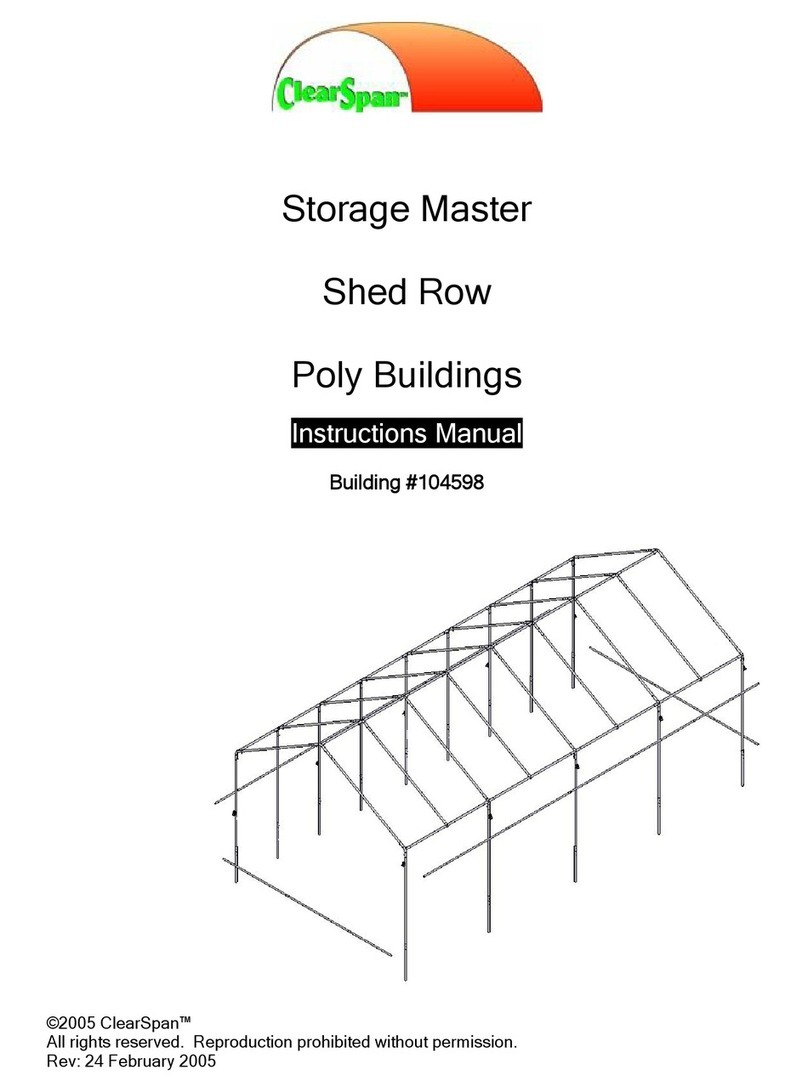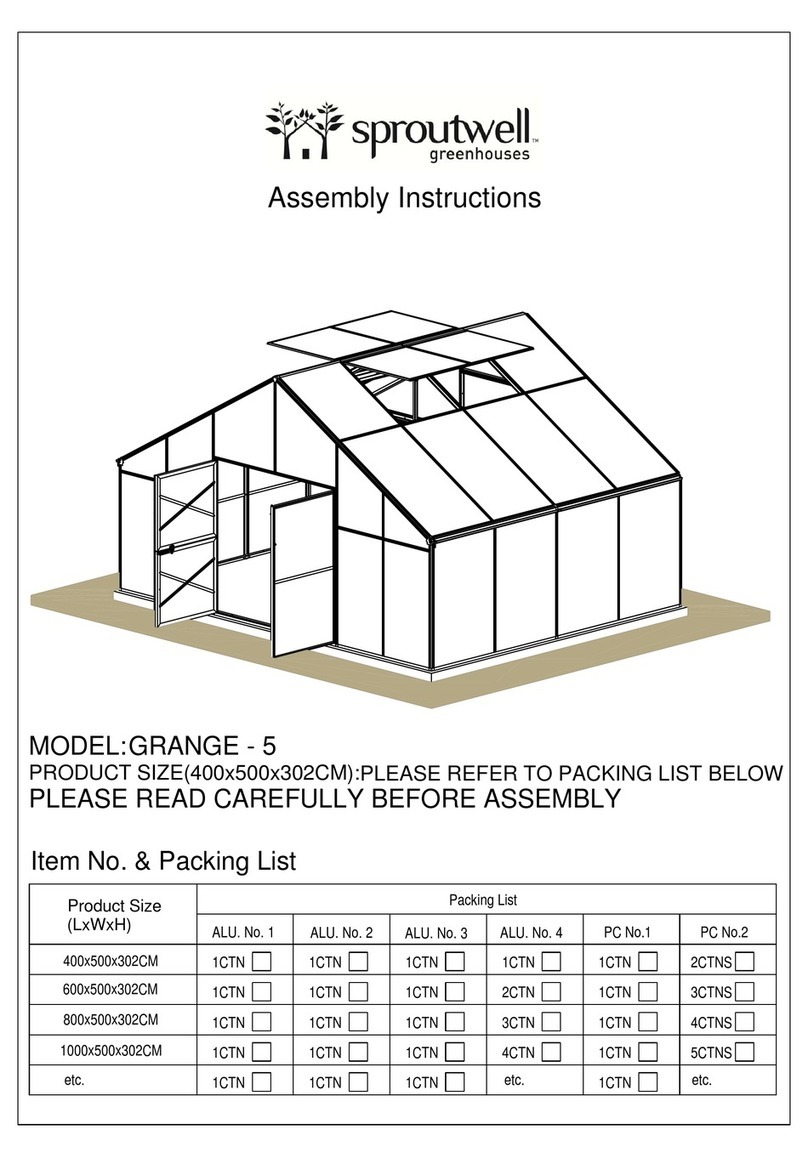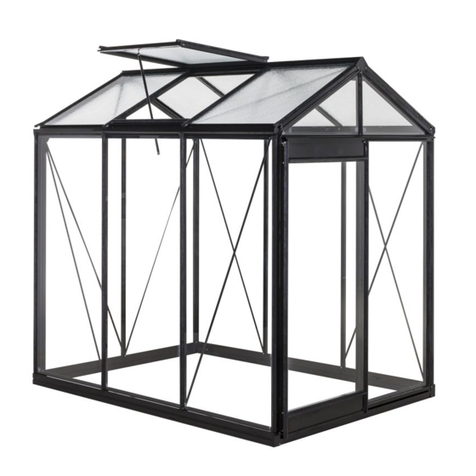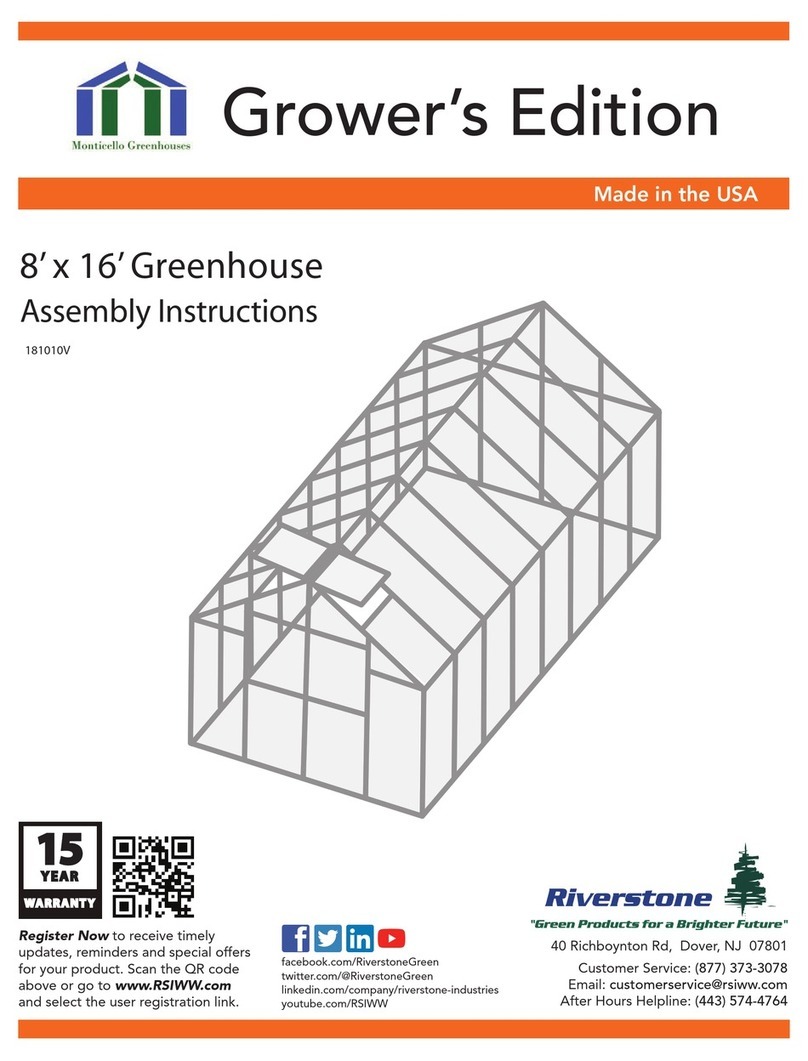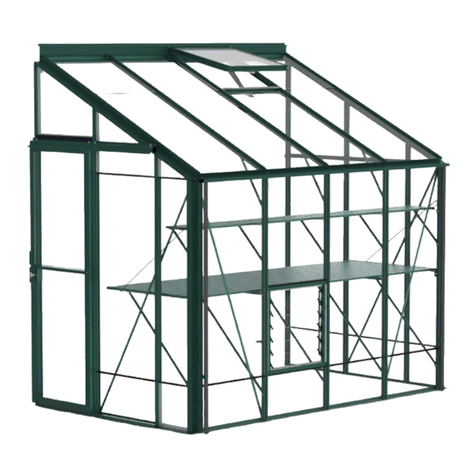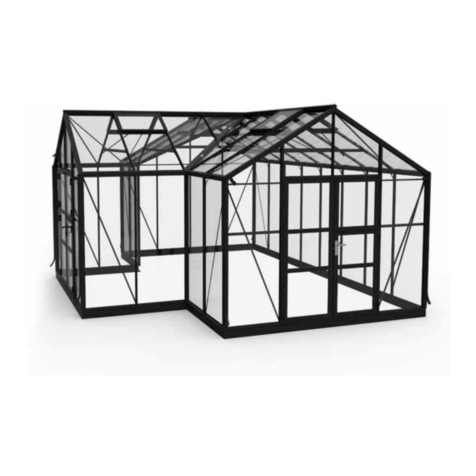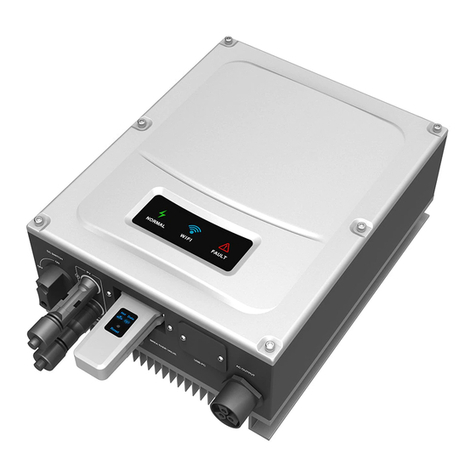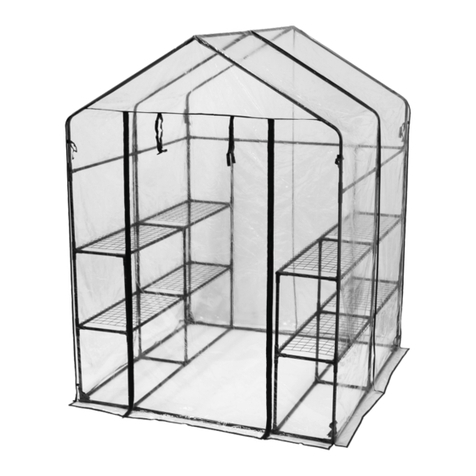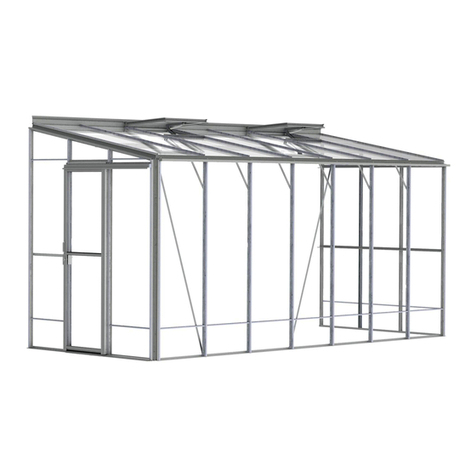
5
Revision date: 11.16.18
Important Information
To achieve the best results from your evaporative cooling
system, read and follow the instructions on this page and
throughout this guide.
Cooling Pads: Break-In Period
New cooling pads function best after preforming an initial
break-in procedure. Complete these steps before normal
operation begins:
1. Verify that pads have been installed according to the
information provided with those pads.
2. Turn on water pump for the evaporative cooling
system and adjust water flow using upper ball valve.
3. Pump water through the system and over the pads
for 24 to 36 hours depending on water hardness in
the area.
4. After completing Step 3, turn water off and inspect
the pads. Pads should be fully saturated with no dry
areas. If dry areas are present, inspect the supply
header tube for obstructions and consult the supply
header maintenance information near the back of
this guide. Check the spray hole angle and make the
necessary adjustments.
Cooling Pad Inspection, Cleaning, and Care
Daily inspection of the cooling pads during normal
operation will help to identify any areas that need
attention. Consult the following information to identify
issues common to most evaporative cooling systems.
• Controlling Scale Deposits
Water evaporation can lead to the deposit of solids on
the cooling pads. Water quality, environmental conditions,
and system operation can all contribute to the buildup of
solids.
Minimize or eliminate On/Off cycling of the system.
Set evaporative cooling system to run continuously to
minimize scale buildup on pads. Control water flow using
the upper ball valve above water screen. Allowing the
pads to dry out due to repeated cycling of the system
increases the deposits of solids on the pads; keep the
pads wet to reduce these deposits.
NOTE: Anytime air flows through wet pads, water should
also be running to keep pads wet and to increase flushing
of solids from the pads.
• Maintain Proper Water Level
Do not allow the bottoms of the cooling pads to sit in
water at any time. Submerged pad sections become
waterlogged and will deteriorate, which decreases pad
life. Adjust the water level as needed to prevent this
condition.
• Algae Growth and Treatment
Some environments and conditions can cause algae
growth on the cooling pads. In those instances, it may be
necessary to treat the water to reduce or eliminate algae.
Contact water conditioning experts in your area for details
and possible solutions.
• Diluting or Changing the Recycled Water
In instances where solids become concentrated in
the recycled water, deposits on the cooling pads can
increase. If this happens, dilute or change the water in
the sump. To dilute, drain water from and add it to the
system. Complete these steps:
1. Turn off the water pump and main water supply to the
system and attach a garden hose to the valve below
the water screen.
2. Close the valve above the water screen and open the
valve below the water screen.
3. Turn on the water pump and pump 1/4 to 1/2 of the
water from the sump, depending on the amount of
scaling on the pads. Use a bucket or barrel to gauge
gallons removed. A system with an 8" PIP drain
trough holds approximately 1.2 gallons per foot of
drain trough.
NOTE: To prevent pump damage, never allow sump
to run dry.
4. After flushing the desired amount of water from the
system, turn off the pump, close the lower valve, and
open the upper valve to its previous setting.
5. Turn main water back on and allow the system to fill
to the set water level.
6. Turn the water pump on and resume normal
operation.
NOTE: To completely change the water, pump all
water from the system, clean the sump, and refill to
resume normal operation. Do not allow the pump to
run when sump is empty.


